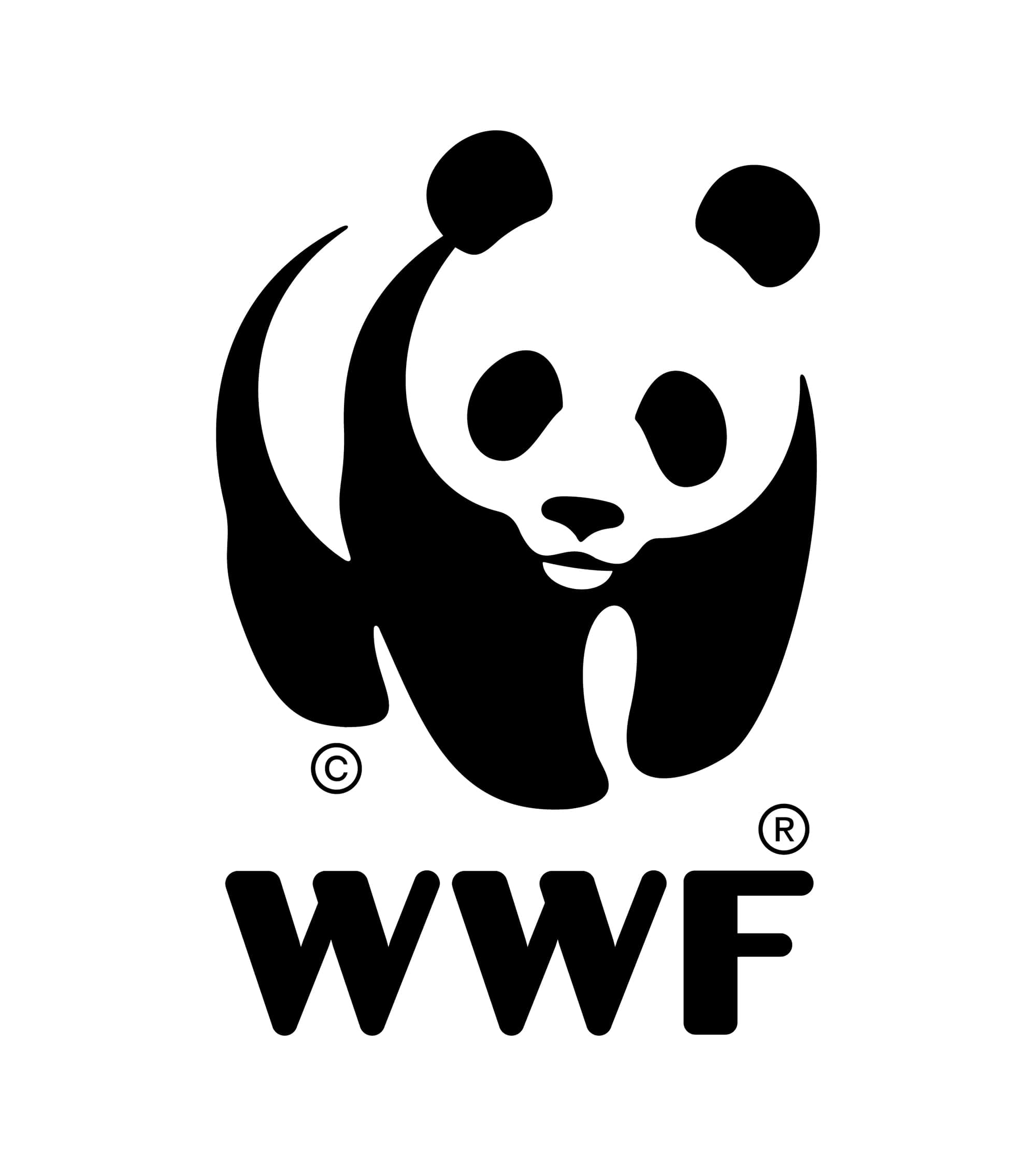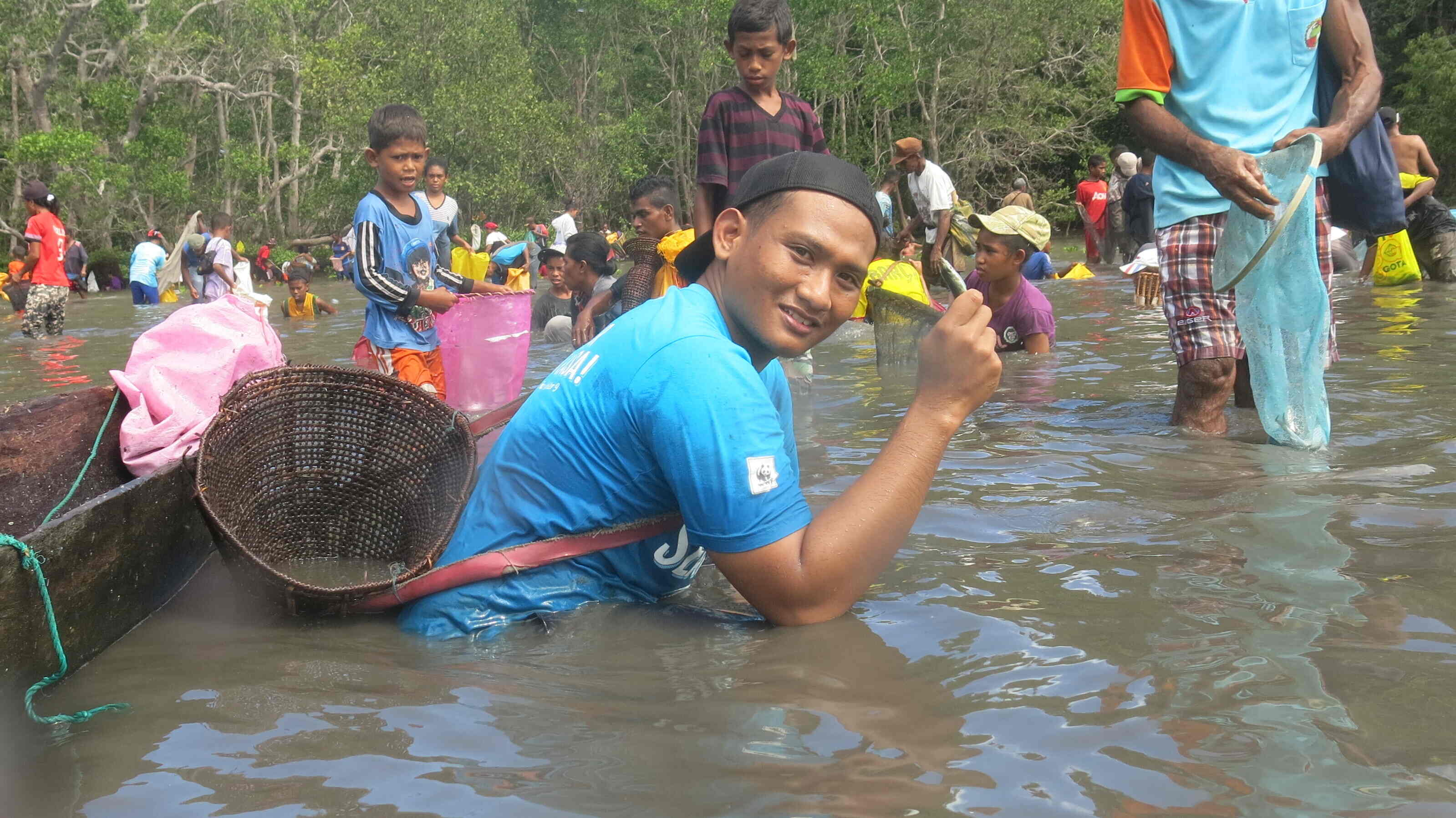SASI AND THE WONDAMA BAY COMMUNITY
The Cenderawasih Bay National Park (TNTC) located in Papua and West Papua Provinces has an area of 1,453,500.00 Ha, through Decree of the Minister of Forestry Number 8009/Kpts-II/2002 on August 29, 2002 was designated as the largest Marine National Park in Indonesia. This National Park is managed by the TNTC Center in collaboration with various parties, one of which is WWF-Indonesia and the communities in the area.
Cenderawasih Bay National Park is representative of the coral reef, coastal, mangrove and mainland tropical forest ecosystems of Papua and West Papua. The park consists of land and coastline (0.9%), mainland islands (3.8%), coral reefs (5.5%), and marine waters (89.8%). 150 species of corals from 15 families were recorded and distributed along the shores of 18 large and small islands. The percentage of live coral cover varied from 30.40% to 65.64%. Generally, the coral reef ecosystem is divided into two zones, namely the reef flat zone (reef flat) and the reef slope zone (reef slope). Coral species that can be seen in the waters of Teluk Cenderawasih National Park are blue coral colonies (Heliopora coerulea), black coral (Antiphates), Family faviidae and Pectiniidae and various types of soft corals.
Because of the size, richness and diversity of this area, the management of TNTC involves many parties and methods in preventing ecosystem damage, one of which is "Sasi". In the language of the Menarbu community, they use the language of the Roon tribe by calling it Kadup which means close the place and the Sombokoro village people call it Sawora which means oath of place, in the general language Sasi is more familiar used by the whole community in Papua and West Papua. The term itself comes from Haruku village, Maluku.
Sasi in principle is a prohibition of taking certain resources at a certain time, with the aim of benefiting those who make Sasi. The term Sasi was originally introduced and practiced by the Church to protect gardens or foodstuffs devoted to the church, this was in line with the arrival of Christian workers/teachers from Maluku. Sasi then became part of the community and was practiced on other resources, both on land and sea. However, practices such as Sasi have also been owned by indigenous people in Teluk Wondama Regency.
Wondama Bay Regency is located within the TNTC area and has an area of 3,959.53 km2 with a population of ± 41,304 people. The district consists of 13 districts, one urban village and 75 villages. There are several villages in Teluk Wondama Regency that are also included in the TNTC area that have implemented the Sasi rule to protect their village/customary areas from overuse and threats. The Sasi in this area is an example of community-based management, which is a church and customary rule that regulates customary/tribal/clan areas to be protected for a certain period of time. In the management of Sasi in this place, there is an open period and a closed period where open is defined as a period when utilization is allowed, while the closed period is defined as a period where the application of prohibitions on the Sasi area is carried out.
The seven villages in Roon District (Yende, Syabes, Niab, Menarbu, Sariay, Mena and Inday) that have customary rights to the archipelago to the northeast of Roon Island, namely the Auri Islands, have agreed and regulated this location as a Sasi location. The area of Sasi in the Auri Islands is quite large, reaching more than 319,924 ha stretching from Yengguandi Island in the north to Anggrameos Island in the south. Another area is Menarbu Village, which is also in the Roon District has been practicing the Sasi or what they call Kadup for 2 years in their village waters with an area of 1194 ha.
Another area outside Roon District that has closed the place is Sombokoro Village in Windesi District with an area of 345 ha. The Sasi rules of each of these villages have differences, such as Sasi in the Auri Islands includes two categories namely Sasi types and Sasi collection methods.
Sasi in Menarbu Village also has two categories, namely type of Sasi and place of Sasi.
The waters of Sombokoro Village have an amazing abundance of macrobenthos (clams, sea cucumbers and lobsters), the abundance of clams with an average abundance of 325.7 individuals/ha (± 8.3), the abundance of sea cucumbers with an average abundance of 182.3 individuals/ha (± 10.4) an average abundance of 59.4 individuals/ha (± 2.9). Menarbu has a potential fish stock area with ±19 families of economically important reef fishes and a variety of well-known fish species such as Angke fish/Bumphead parrotfish (Bolbometopon muricatum), Napoleon fish(Cheilinus undulastus), Yellow fish/Blubberlip snapper (Lutjanus rivulatus)and other reef fishes.
Auri Islands also have coral reef conditions in the moderate to good category (based on KEPMEN LH Number 4 of 2001) with a variety of animals encountered such as turtles and sharks (October Monitoring, 2019). However, one problem with the management of Sasi is that there are always violations of the rules that have been made, usually by people outside the village, such as the case in the Auri Islands, which has a considerable distance from the village area, several times visited by fishermen who are looking for fish or sea cucumbers using compressors and bombs.
Sasi. Sasi of marine resources is the wisdom of local communities in Wondama Bay in protecting resources that are important to them. Sasi is a conservation practice that has long been practiced by the community since ancient times to protect resources that are important to them from various threats. Sasi can be used for the governance of sustainable fisheries utilization practices, so Sasi can allow fishing in environmentally friendly ways such as fishing and balobe.





